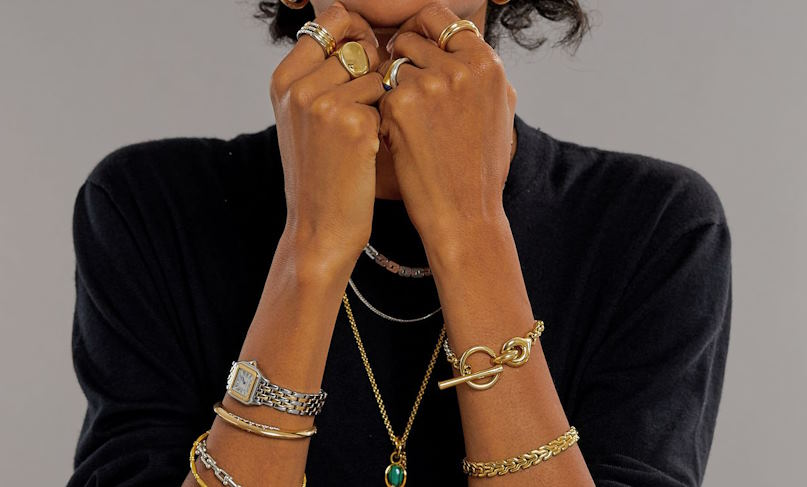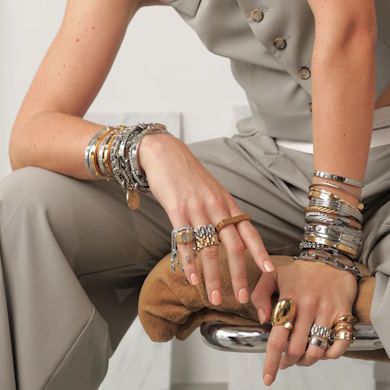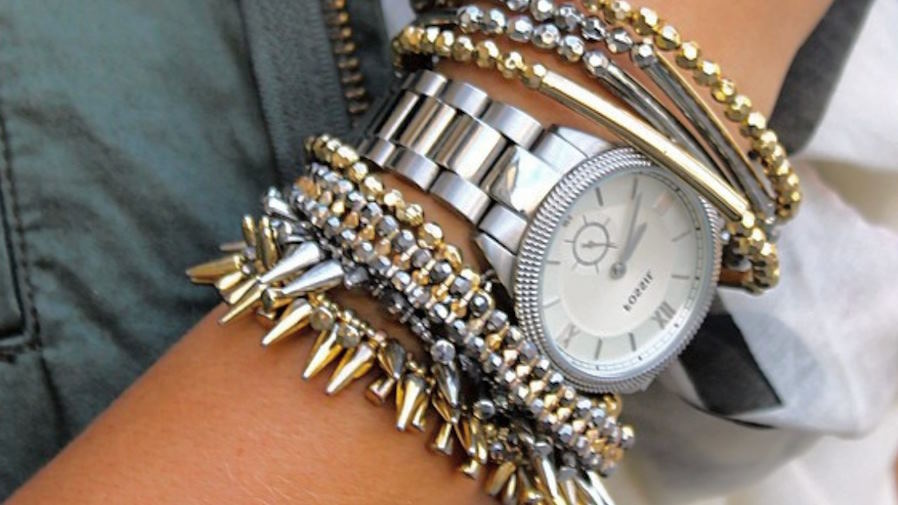
The Dos and Don’ts of Mixing Metals in Your Jewelry
Mixing metals in jewelry isn’t just a trend; it’s an art form that allows individuals to express their unique style and personality. From subtle accents to bold statements, the combination of different metals adds depth and dimension to any outfit. But mastering the art of metal mixing requires more than just throwing together random pieces—it’s about understanding the intricacies of each metal type and how they complement one another.
Understanding Metal Types
When it comes to jewelry, metals can be broadly categorized into two types: precious and non-precious metals.
Precious Metals
- Gold
Gold is a timeless classic in jewelry making, available in various hues such as yellow, white, and rose gold. Each shade offers a distinct aesthetic appeal, allowing for versatile mixing and matching.
- Silver
Silver jewelry is loved for its affordability and versatility. It pairs well with both casual and formal attire, making it a popular choice for everyday wear.
-
 Platinum
Platinum
Known for its durability and purity, platinum is a precious metal often used in high-end jewelry. Its naturally white hue complements various gemstones and other metals.
Non-Precious Metals
Non-precious metals like stainless steel, brass, and copper offer affordability and durability. While they may lack the prestige of precious metals, they can still create stunning jewelry pieces when mixed thoughtfully.
Dos of Mixing Metals
Consider Skin Tone
When mixing metals, consider your skin tone to ensure the jewelry complements your complexion. Warm-toned skin pairs well with gold and rose gold, while silver and platinum complement cooler undertones.
Start with a Dominant Metal
Begin by selecting a dominant metal to anchor your look. This metal will serve as the primary focus, while other metals can be used as accents to enhance the overall aesthetic.
Match Metals with Gemstones
Pairing metals with complementary gemstones can create a cohesive and visually appealing ensemble. For example, pairing yellow gold with warm-toned gemstones like citrine or topaz can enhance the richness of both elements.
Layering Metals
Experiment with layering different metal pieces to add depth and dimension to your jewelry collection. Mix delicate gold chains with silver pendants or stack multiple bracelets in varying metal tones for a stylish, layered look.

Don’ts of Mixing Metals
Avoid Overdoing It
While mixing metals can add interest to your look, avoid overdoing it. Opt for a few well-coordinated pieces rather than layering excessive amounts of jewelry, which can appear cluttered and overwhelming.
Beware of Clashing Colors
Be mindful of how metal colors interact with each other and with your clothing. Avoid pairing metals that clash with the colors of your outfit, as this can create a disjointed appearance.
Watch for Allergic Reactions
Some individuals may be allergic to certain metals, particularly nickel, commonly found in costume jewelry. If you have sensitive skin, opt for hypoallergenic metals like titanium or surgical stainless steel to avoid skin irritation.
Tips for Balanced Metal Mixing
Use the Same Metal Family
To maintain cohesiveness in your jewelry ensemble, stick to metals within the same color family. Mixing different shades of gold or silver can create a sophisticated and harmonious look.
Experiment with Textures
Incorporate textured metal pieces like hammered or brushed finishes to add visual interest to your jewelry collection. Mixing textures can create a dynamic and visually appealing contrast.
Seek Professional Advice
If you’re unsure about how to mix metals effectively, don’t hesitate to seek advice from a professional jeweler. They can provide personalized recommendations based on your style preferences and skin tone.









